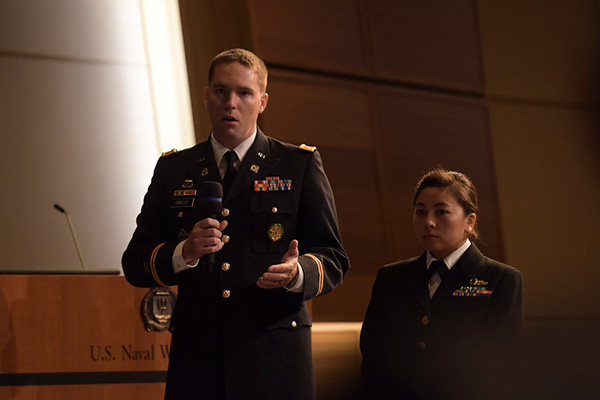Theater Security Decision Making
Theater Security Decision Making (TSDM) is designed to engage intermediate-rank students in the complexities of today's national and international security environment with a strong emphasis on regional security issues. The course offers a broad interdisciplinary curriculum in contemporary security studies that encompasses a diverse spectrum of regional and global issues and perspectives.

About the Course
This eight-credit hour courses provide a broad interdisciplinary foundation in contemporary security studies including international relations, regional studies, foreign policy analysis and decision-making. The curriculum consists of two sub-courses and a culminating exercise:
- Security Strategies
- Policy Analysis
- TSDM Final Exercise (FX)
Capstone FX
At the end of TSDM, each seminar acts as a geographic combatant command working group to produce and present a capstone FX. Student seminars simulate the role of a theater strategic planning team for a geographic combatant command (GCC). Each seminar develops and presents an executive-level strategic estimate of the near-term regional security environment for one of five GCCs, the main tenants of a theater strategy that advances U.S. national interests, a priority list of capabilities needed to advance that strategy, and an implementation case study.
Visit Department
